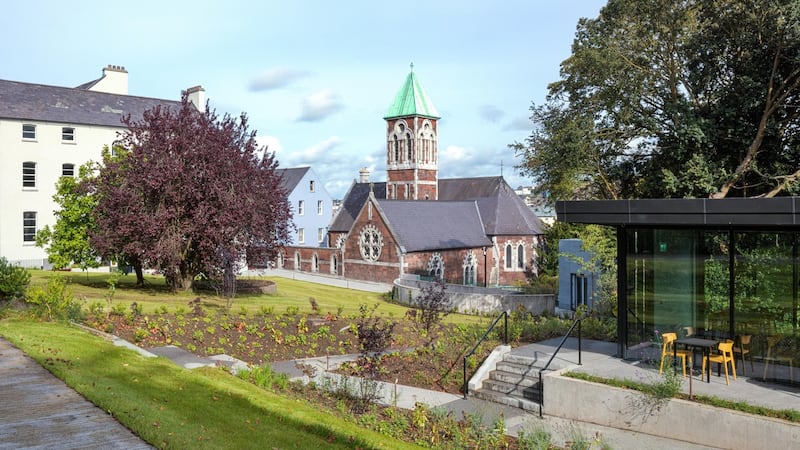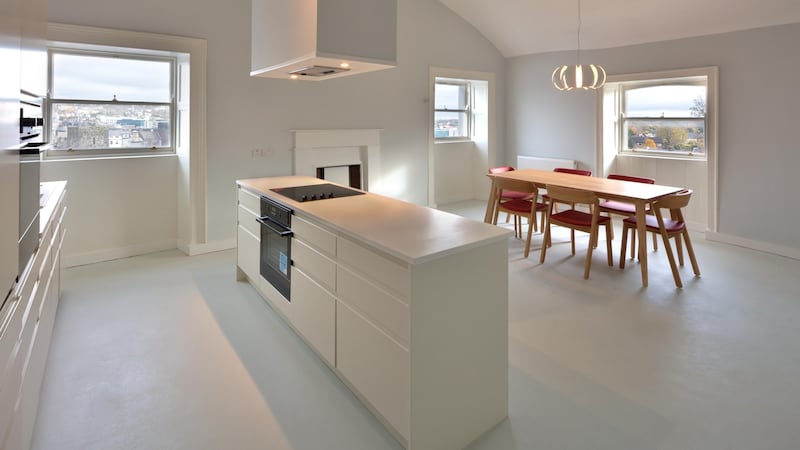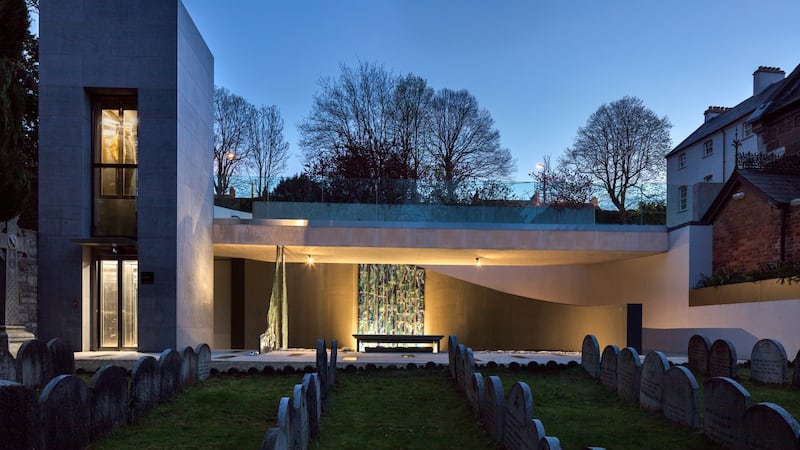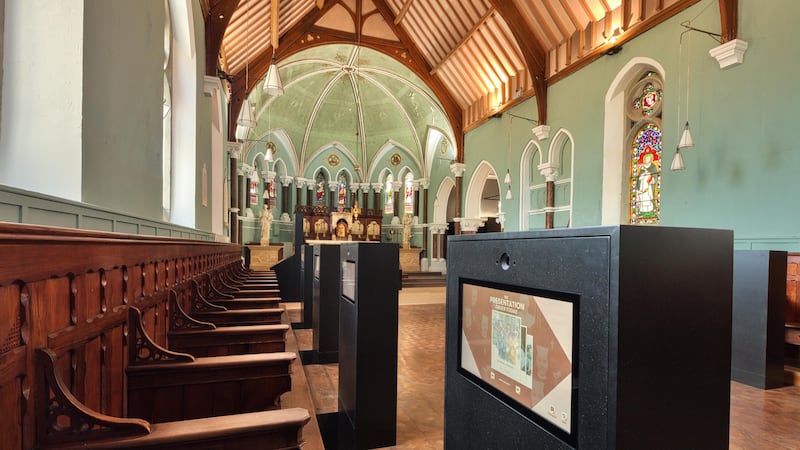It can’t be often that an expression of spiritual tourism includes a university School of Architecture, but this is the case at Nano Nagle Place in Douglas Street in Cork.
Named for the pioneering late 18th century founder of the Presentation Sisters in Ireland, the 4-acre site and its variety of linked premises are the fulfilment of a €10.5 million project funded by the Presentation congregation in 2014 and officially opened by former president Dr Mary McAleese last December.
“Nano Nagle is the headline act here,” says Shane Clarke, chief executive of Nano Nagle Place, introducing Dr Danielle O’Donovan, architectural historian and programme manager for the absorbing heritage area at the core of the complex of buildings fronting onto Douglas Street.
0 of 11
“The overall picture is of making Nano Nagle come alive in the 21st century.”
Aware that the local tourism infrastructure “has a long way to go”, Clarke is a member of the CORE City Centre steering group at City Hall.
When Nano Nagle returned from Paris in 1754 to her family roots in Cork and pitted her educational idealism against the representatives of the Penal Laws, she relied for money on her charitable Nagle relations, who included Edmund Burke.
Now having delivered on its original budget, the centre has 10 full-time staff and annual running costs so far estimated at €500,000.




Entered through the arcaded undercroft of what was once the primary school the buildings accumulate towards the glazed ramparts of the architecture building where University College Cork and Cork Institute of Technology are the source of crucial rental income as joint tenants of the South Presentation Centre C.L.G.
The company's 10 trustees include Sr Grace Redmond, formerly the 18-year old Irish girl filmed in a BBC documentary as she left her home in 1966 to join the Presentation community in Cork. This is a place of many connections, among them the grave of Sr Alicia O'Connell, whose sister Ellen also entered the convent but left in 1833 and married James Augustus Joyce and thus became the grandmother of writer James Joyce.
Since her death the tomb of Nano Nagle herself is a pilgrim site, and its new shrine-like location is enhanced by the sculptural glass wall from Eoin Turner. Structurally and spatially organised and completed by a team led by Jack Coughlan Architects, the sloping span of schoolrooms, convent, courtyards, gardens and graveyard is open to the public although there is an entrance fee for the heritage element which contains the 1865 chapel by George Goldie, now the venue for cultural events.
Heritage experience
Its removable video pillars along the choir stalls are an example of the connective engagement throughout the centre’s colourful displays of interpretive signage and branding by Hurrah Hurrah.
Moving back to Ireland after more than 20 years in city management and urban design in London, Dubliner Shane Clarke regarded this job opportunity as an interesting challenge.
“It has been both more interesting and more challenging than I ever imagined. The commitment is to making the centre the best heritage experience in Cork and we’re working in association with UCC, the Cork Institute of Technology, the Crawford Municipal Gallery and others in establishing our cultural and social outreach, letting the people feel welcome to come in, to roam the gardens and to visit Nano’s tomb as they have always done.”


Rarely can finance and idealism have coalesced so convincingly as in this celebration of a rebel woman. Nagle was a sophisticated visionary, an emigré from French schooling and Parisian society. Here her social credo is exemplified by the worn handle of her walking stick, used when in old age and failing health she continued her visits to the sick and the needy, her pathways through the lanes and hillsides of Cork spreading like a map to an international network of foundations.
Headline act or no, there was nothing like this in Nagle’s courageous scheme of things although the intention is to follow her social and ethical creed as closely as possible. Even the café observes those principles, its menus strongly based on local organic sources.
“Our ambition is matching local needs in partnership with existing identities. There’s a resurgence of the Douglas Street Traders Association for example. There’s the South Parish Historical Society. We house the Lantern Community Project for local development initiatives and education, and also the Cork Migrant Centre for migrant information and integration.
“We have the congregation’s archive, with several Presentation sisters living here and assisting as volunteer guides, and the office of the South West Province of the order is housed here. The Munster Literature centre is just down the street from us and already we have had a poet-in-residence here for three months: that’s the perfect liaison for us, to have a cultural tenant in one of our apartments.”
Architecture students will use a separate entrance at Abbey Street near Red Abbey. This remnant of an early 14th century Augustinian friary is a rare reminder of Cork’s medieval core and it is along this medieval spine from south to north that Nano Nagle’s vocation found its reality.
“To a certain extent it may seem as if we are appropriating the rest of the city as an extension of Nano Nagle Place,” says Clarke unapologetically. “But this central site evolved almost as a walled enclave and we want to break down those walls.”


























